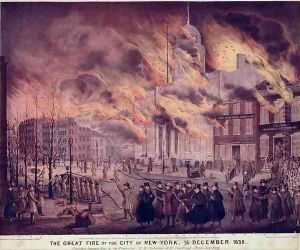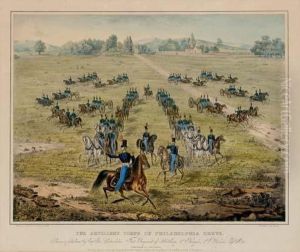Alfred M. Hoffy Paintings
Alfred M. Hoffy, born in 1796, was an artist of varied talents, known primarily for his work as a lithographer, illustrator, and publisher during the 19th century. His contributions to American visual culture, particularly in Philadelphia, were significant during a period of burgeoning print media and expanding public interest in visual arts and illustration.
Hoffy's early life is not thoroughly documented, but it is known that he was active during the early to mid-1800s, a time when lithography was becoming increasingly popular as a medium for reproducing images. This was a period of innovation and expansion in printing technologies, which coincided with the rise of a middle class interested in purchasing art and illustrated publications.
As an artist, Hoffy was particularly recognized for his botanical illustrations and fruit prints, which were both scientifically valuable and aesthetically pleasing. These works often served as important records for horticulturists and botanists. Hoffy's precision and attention to detail in his representations of plant life contributed to his reputation as a skilled lithographer.
In addition to botanical illustrations, Alfred Hoffy also produced portraits, historical scenes, and genre images. His work is characterized by a clear, detailed style that reflected the tastes and interests of his time. Hoffy's lithographs were not only works of art but also served an educational purpose, providing visual documentation of subjects such as American history and natural history.
Hoffy's role as a publisher was also notable. He published 'Hoffy's North American Pomologist,' a periodical that featured his lithographs of fruits, underscoring his interest in the natural sciences and his entrepreneurial spirit. His activities as a publisher and editor allowed him to influence the dissemination of visual culture in America directly.
Alfred M. Hoffy passed away in 1860, leaving behind a legacy as a significant figure in the American lithographic arts. His works continue to be of interest to collectors, historians, and scholars of American art and history, offering insights into the visual and scientific culture of his time.

